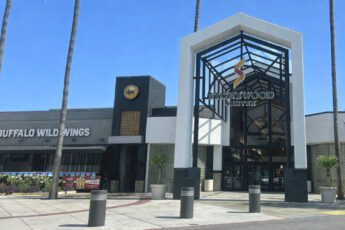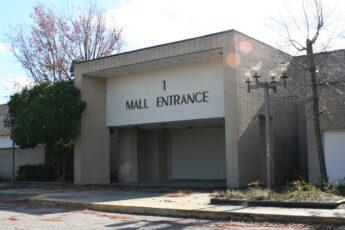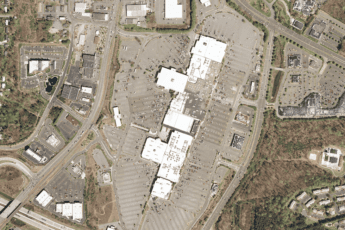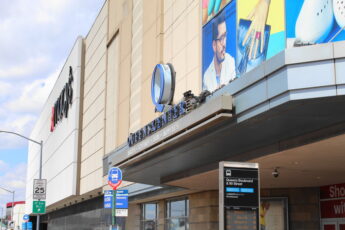Initial Development and Planning
Melvin Simon & Associates started planning Battlefield Mall in 1963. Their proposal included a Montgomery Ward department store, which was a major retail chain at the time.
The developers aimed to create a large shopping center that would attract both residents and visitors.
By 1968, they secured commitments from two more anchor stores: J.C. Penney and Dillard's. These stores were crucial in drawing additional tenants and ensuring the mall's financial viability.
The presence of these well-known retailers indicated that the mall would become a central shopping hub in Springfield, Missouri.
Construction of Battlefield Mall began soon after the anchor stores were confirmed. The developers focused on creating a modern shopping environment that would accommodate a variety of retail spaces.
They planned for a mix of national chains and local businesses, ensuring a diverse shopping experience for customers.
The mall was designed to cover 685,000 square feet of retail space and had a layout that allowed for easy expansion. The planning phase emphasized the need for ample parking, convenient access to major roads, and potential future growth.
This strategic planning laid the foundation for what would become one of Springfield's premier shopping destinations, highlighted in local discussions on things to do in Springfield, MO.
Opening and Early Years (1970-1979)
Battlefield Mall opened on July 23, 1970. On its first day, it was 93% occupied, showing strong interest from retailers. J.C. Penney, Dillard's, and Montgomery Ward were the key anchor stores, attracting crowds.
The mall wasn't just about the big anchors. Smaller tenants like McCrory, a popular five-and-dime store, also played an important role. McCrory's presence added variety and attracted shoppers who came for more affordable goods.
Piccadilly Restaurants provided a dining option, making the mall a full-day destination for families. Osco Drug was another early tenant, offering a wide range of products beyond just pharmaceuticals.
In 1975, McCrory closed, but the space didn't stay vacant for long. Heer's, a local department store, took over the spot. Heer's was already a well-known name in the region, so its move into the mall was a big event.
Throughout the 1970s, Battlefield Mall became the go-to place for shopping in Springfield. With a mix of large department stores and smaller retailers, the mall attracted a steady flow of customers. Its early success set the stage for future expansions and changes.
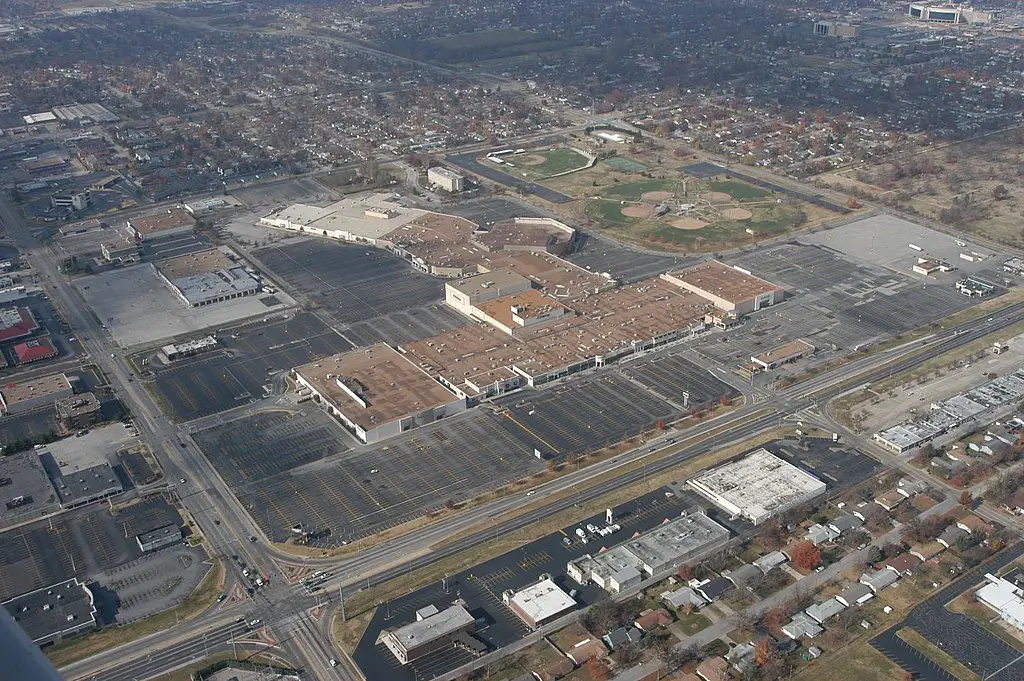
First Major Expansion (1980-1982)
By the late 1970s, Battlefield Mall was already a major retail hub, but the demand for more space and stores led to a major expansion plan in 1979. The developers announced plans to add over 400,000 square feet of new retail space, aiming to bring in more stores and provide more options for shoppers.
When it opened in 1982, the expansion added around 85 new stores. Sears became the new anchor store, taking up a large portion of the new space. This addition was a big draw for shoppers, as Sears was a household name and offered a wide range of products, from clothing to home appliances.
Dillard's also moved to a new location within the mall during this expansion. The original Dillard's space was sold to Famous-Barr, another department store chain.
This move allowed Dillard's to expand its offerings, while Famous-Barr brought a new variety of products to the mall, further enhancing the shopping experience.
The expansion wasn't just about the big-name stores. Smaller retailers also benefitted, with many new shops opening up in the expanded space. This period marked a new phase for Battlefield Mall.
The mall's growth reflected the broader economic trends of the early 1980s, as retail spaces across the country were expanding to meet consumer demand.
Continued Growth and Changes (1983-2000)
Through the 1980s and 1990s, Battlefield Mall kept adapting to the changing retail landscape. On May 30, 1998, Old Navy opened its doors in the mall.
This was a big deal at the time because Old Navy was a popular store, especially with younger shoppers. Its arrival marked the mall's effort to stay current with trends and attract a broader audience.
The mall didn't only focus on bringing in new stores; it also worked on maintaining its appeal to a wide range of customers.
During these years, the mall's management kept things fresh. They added new stores, updated existing spaces, and worked on making the shopping experience more enjoyable.
Malls across America faced challenges in the 1990s, but Battlefield Mall managed to stay relevant by keeping its mix of stores updated and catering to a wide audience.
The Impact of Department Store Closures (2001-2020)
The early 2000s brought new challenges for Battlefield Mall, especially with the closure of Montgomery Ward in 2001. This was a tough blow because Montgomery Ward had been one of the original anchor stores.
However, the mall didn't waste time finding a new use for the space. Dillard's expanded into the former Montgomery Ward location, opening Dillard's South in 2002. This move allowed Dillard's to offer a wider range of products, spreading its departments across two large spaces in the mall.
Another big change came in 2006 when Macy's, a well-known national retailer, took over the space that had previously been Famous-Barr. Macy's brought fresh energy to the mall and helped attract shoppers looking for a more upscale shopping experience.
The transition from Famous-Barr to Macy's was part of a larger corporate change, as Macy's parent company, Federated Department Stores, acquired Famous-Barr's parent, The May Department Stores Company.
The most recent challenge came in February 2020 when Sears announced it would close its Battlefield Mall location. Sears had been a staple in the mall since the early 1980s, so its closure marked the end of an era. The store closed in mid-April 2020, leaving one of the mall's anchor spaces vacant.
Recent Additions and Developments (2023-2024)
In September 2023, four new retailers opened their doors in the mall. Among them was Rally House, a popular sports apparel and merchandise store known for its extensive selection of local and national sports team gear.
The addition of Rally House provided a new shopping option for sports fans in the region, helping to draw in a different segment of the market.
The momentum of new store openings continued into 2024. In March, Battlefield Mall introduced two new stores, MINISO and MOD on Trend, and a unique Chick-fil-A Drive-N-Go concept.
This concept allowed customers to pick up their orders quickly without leaving their cars, reflecting the growing demand for convenience in shopping and dining experiences.
The introduction of this drive-through format at Battlefield Mall was part of a broader trend in the retail and food service industries, where businesses are increasingly focusing on speed and convenience.
April 2024 saw further expansion with the announcement of six new stores coming to the mall. Among these new additions was Warby Parker, a well-known eyewear retailer that has gained popularity for its stylish glasses and customer-friendly policies, such as free home try-on.
The arrival of Warby Parker was particularly noteworthy as it marked the brand's entry into the Springfield market, adding a fresh and trendy option for shoppers seeking eyewear.
These new developments underscore Battlefield Mall's ongoing efforts to stay relevant and competitive in a rapidly changing retail landscape.
By continuously introducing new stores and concepts, the mall has managed to attract a steady stream of visitors and remain a central part of the Springfield shopping scene.

